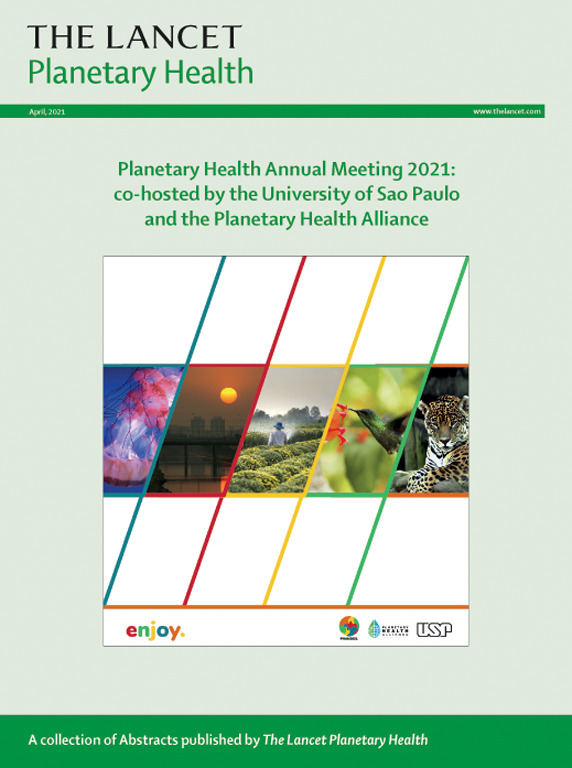长期空气污染暴露与偶发性痴呆:一项系统综述和荟萃分析。
IF 21.6
1区 医学
Q1 ENVIRONMENTAL SCIENCES
引用次数: 0
摘要
背景:快速发展的证据基础表明,暴露于室外空气污染是痴呆症发病的一个风险因素,自2022年以来,相关出版物有所增加。我们试图综合并批判性地评估这一最新研究的证据基础。方法:在这项系统评价和荟萃分析中,我们检索了MEDLINE、Embase、Cochrane Library、CINAHL、Global Health、PsycINFO、Scopus和Web of Science Core Collection,从数据库建立到2023年10月23日,检索了成人(≥18岁)的主要观察性研究,这些研究提供了长期(≥1年)暴露于室外空气污染物与随后的医生诊断痴呆之间关系的定量分析。当三个或更多的独立研究报告了一个暴露-结果对时,提取关联的效应估计并与预先指定的暴露增量协调,并纳入反方差加权随机效应荟萃分析。采用I2统计量和Cochran Q检验评估研究间不一致性。使用健康评估和翻译办公室工具评估研究水平的偏倚风险和总体证据的置信度,并检查发表偏倚。本综述的方案注册号为PROSPERO, CRD42023414413。结果:检索得到15 619条记录,其中51项研究符合数据提取的纳入标准。在排除了由于人群重叠和缺失连续效应估计的研究后,32项研究报告了符合三个或更多研究阈值的暴露-结局对,并纳入了对痴呆事件的调整效应估计的荟萃分析和/或痴呆亚型的亚组分析。在痴呆事件的荟萃分析中,我们发现痴呆诊断与长期暴露于pm2.5显著相关(21项研究,n=24 030 527,暴露每增加5 μg/m3合并调整风险比(HR)为1.08 [95% CI 1.02 -1·14];I2=95%),二氧化氮(16项研究,n=17 228 429,合并校正HR每增加10 μg/m3, 1.03 [1.01 - 1.05];I2=84%)和黑碳/PM2·5吸光度(6项研究,n=19 421 865,合并校正HR每增加1 μg/m3, 1.13 [1.01 - 1.27];I2 = 97%)。我们发现与氮氧化物暴露无显著关联(5项研究,n=241 409,合并校正HR每增加10 μg/m3, 1.05 [0.97 - 1.13];I2=44%), PM10(4项研究,n=246 440,每增加15 μg/m3合并调整HR为1.52[0.80 -2·87];I2=82%)或年臭氧(4项研究,n=419 972,汇总校正HR每增加45 μg/m3, 0.82 [0.35 - 1.92];I2=69%),在这些合并分析中,研究之间存在中等到相当大的异质性。在总共32项研究中,3项(9%)在7个领域中的一个可能存在高偏倚风险;所有其他的研究都有可能到绝对低偏倚风险的评级。系统评价中研究证据的总体确定性为中等。解释:这一分析增加了室外空气污染物是痴呆症风险因素的证据,表明减少污染暴露可以降低痴呆症发病率,更严格的空气质量标准可能会带来实质性的健康、社会和经济效益。资助:欧洲研究理事会地平线2020研究与创新计划和欧盟地平线欧洲框架计划。本文章由计算机程序翻译,如有差异,请以英文原文为准。
Long-term air pollution exposure and incident dementia: a systematic review and meta-analysis
Background
A rapidly evolving evidence base suggests that exposure to outdoor air pollution is a risk factor for the onset of dementia, with an upturn in publications since 2022. We sought to synthesise and critically assess this evidence base accounting for the latest studies.
Methods
In this systematic review and meta-analysis, we searched MEDLINE, Embase, Cochrane Library, CINAHL, Global Health, PsycINFO, Scopus, and Web of Science Core Collection from database inception up to Oct 23, 2023, for primary observational studies of adults (aged ≥18 years) that provided a quantitative analysis of the association between long-term (≥1 year) exposure to outdoor air pollutants and a subsequent physician diagnosis of dementia. When three or more independent studies reported an exposure–outcome pair, effect estimates of the association were extracted and harmonised to a prespecified exposure increment, and included in inverse-variance weighted random-effects meta-analyses. Between-study inconsistency was assessed using the I2 statistic and the Cochran Q test. Study-level risk of bias and confidence in the overall body of evidence were assessed with the Office of Health Assessment and Translation tool, and publication bias was examined. The protocol for this review was registered with PROSPERO, CRD42023414413.
Findings
The search generated 15 619 records, of which 51 studies met the inclusion criteria for data extraction. After excluding studies due to population overlap and missing continuous effect estimates, 32 studies reported on exposure–outcome pairs that met the threshold of three or more studies, and were included in meta-analyses of adjusted effect estimates for incident dementia and/or in subgroup analyses of dementia subtypes. In meta-analyses of incident dementia, we identified a dementia diagnosis to be significantly associated with long-term exposure to PM2·5 (21 studies, n=24 030 527, pooled adjusted hazard ratio (HR) per 5 μg/m3 increase in exposure, 1·08 [95% CI 1·02–1·14]; I2=95%), nitrogen dioxide (16 studies, n=17 228 429, pooled adjusted HR per 10 μg/m3 increase, 1·03 [1·01–1·05]; I2=84%), and black carbon/PM2·5 absorbance (six studies, n=19 421 865, pooled adjusted HR per 1 μg/m3 increase, 1·13 [1·01–1·27]; I2=97%). We found no significant association for exposure to nitrogen oxides (five studies, n=241 409, pooled adjusted HR per 10 μg/m3 increase, 1·05 [0·97–1·13]; I2=44%), PM10 (four studies, n=246 440, pooled adjusted HR per 15 μg/m3 increase, 1·52 [0·80–2·87]; I2=82%), or annual ozone (four studies, n=419 972, pooled adjusted HR per 45 μg/m3 increase, 0·82 [0·35–1·92]; I2=69%), with moderate to considerable heterogeneity between studies in these pooled analyses. Of the 32 studies overall, three (9%) had a probably high risk of bias in one of seven domains; all other studies had ratings of probably to definitely low risk of bias. The overall certainty of evidence of studies in the systematic review was moderate.
Interpretation
This analysis adds to the body of evidence that outdoor air pollutants are risk factors for dementia, indicating that reduced exposure to pollution could reduce dementia rates and stricter air quality standards would likely provide substantial health, social, and economic benefits.
Funding
European Research Council under the Horizon 2020 research and innovation programme and the EU’s Horizon Europe Framework Programme.
求助全文
通过发布文献求助,成功后即可免费获取论文全文。
去求助
来源期刊

Lancet Planetary Health
Multiple-
CiteScore
28.40
自引率
2.30%
发文量
272
审稿时长
8 weeks
期刊介绍:
The Lancet Planetary Health is a gold Open Access journal dedicated to investigating and addressing the multifaceted determinants of healthy human civilizations and their impact on natural systems. Positioned as a key player in sustainable development, the journal covers a broad, interdisciplinary scope, encompassing areas such as poverty, nutrition, gender equity, water and sanitation, energy, economic growth, industrialization, inequality, urbanization, human consumption and production, climate change, ocean health, land use, peace, and justice.
With a commitment to publishing high-quality research, comment, and correspondence, it aims to be the leading journal for sustainable development in the face of unprecedented dangers and threats.
 求助内容:
求助内容: 应助结果提醒方式:
应助结果提醒方式:


